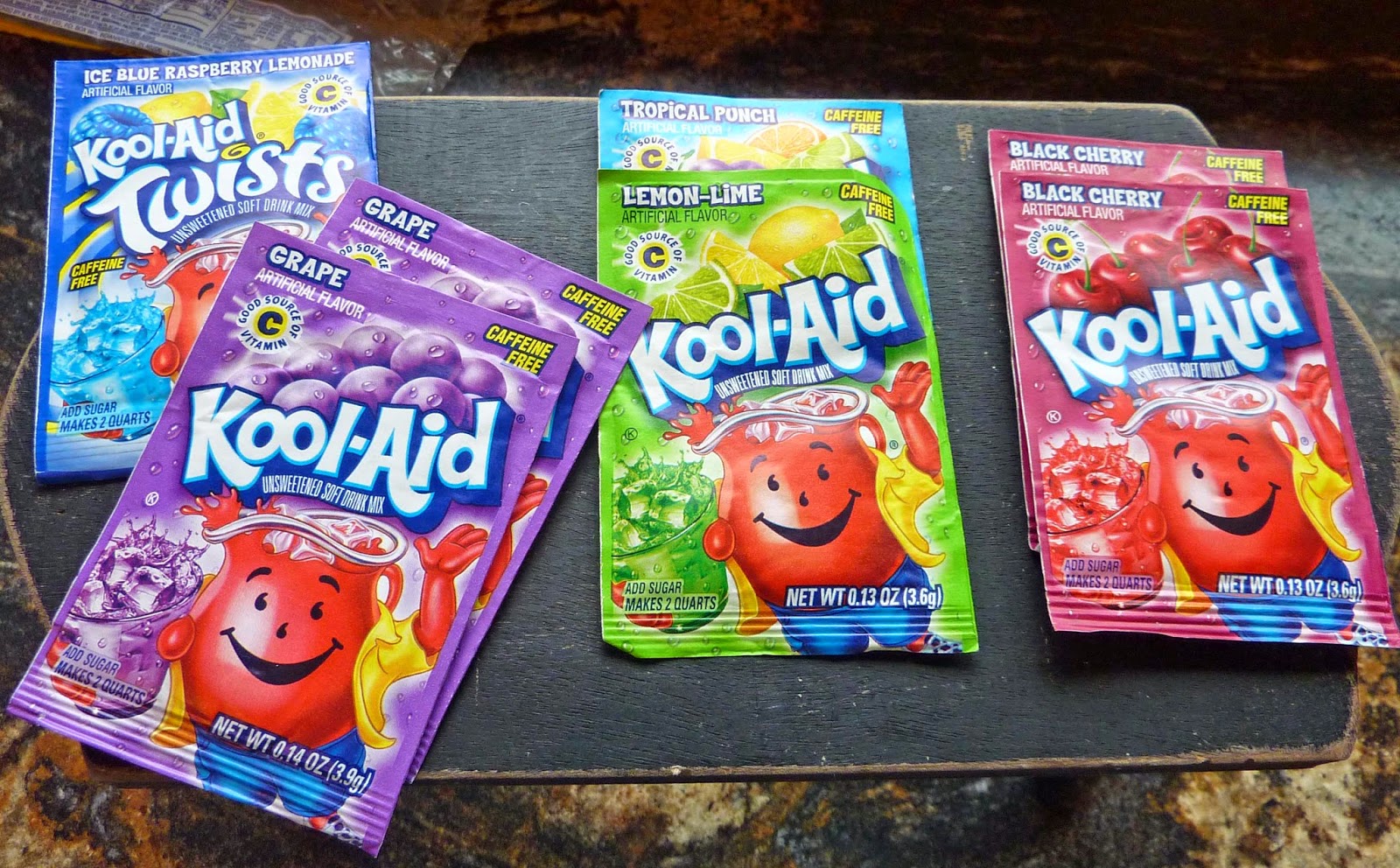 |
| These were done MANY years ago when I was a very new spinner. The top one was with, of course, grape. The lower one was something with peach in the name - I don't think that is still available. |
 I was never too interested in "natural" dying because it isn't supposed to be very colorfast. I have used chemical dyes and get wonderful results. But I've also really enjoyed Kool-Aid dying and the color seems to be long-lasting. I have not, however, used Kool-Aid when I needed a particular color - it doesn't seem to be an exact science!
I was never too interested in "natural" dying because it isn't supposed to be very colorfast. I have used chemical dyes and get wonderful results. But I've also really enjoyed Kool-Aid dying and the color seems to be long-lasting. I have not, however, used Kool-Aid when I needed a particular color - it doesn't seem to be an exact science! To me, it's more for the fun of playing with the colors. And then having some fun wool to spin up and use in mittens or hats.
It's very easy. There are many ways you can heat up the water - crock pot, microwave, even over a fire outside. I use a large vessel in which to boil water on the stove top, with enough room for the fiber, as well. I have used the bottom of an enamel roaster and I've used an enamel canner. In this instance I am using a large, antique enameled pan because the inside is white and it should show what I'm doing nicely. We'll soon see!
It doesn't matter how much water you use, as the wool will absorb the color that is available - no matter how much water. You need enough water to fully submerge the wool.
While the water is warming up, I add the Kool-Aid and pour in a "good amount" of salt. Salt helps the color set, but I've never measured it - maybe somewhere between 1/4-1/2 cup. Stir the mixture until it is dissolved, which doesn't take long since the water is getting hot.
 |
| For this batch I used grape and tropical punch (red). |
I get the dye bath water to the point of sending up wisps of steam. Keeping it at that point, I gently add the wool, pushing it down into the water - gently to prevent felting. Then I leave it alone, just keeping an eye on it to make sure it doesn't begin boiling. I leave the wool on the low heat for about an hour, but longer is okay, too.
 |
| Notice that the water still has color but the wool begins to absorb the color right away. |
Little by little, the water becomes clearer and the wool gets more and more color. You can gently lift out a tuft of wool to see the color it is becoming, keeping in mind that it will be a duller color when it's dry.
When the water gets a lot clearer than when I started, I turn the heat off. And to quote Alton Brown, "just back away. Don't touch it!" I left the wool in the water until it was about room temperature. The amount of time it takes depends on the amount of water you use. The wool continues to absorb color while it is cooling.
 |
| It was hard to show the water in the pan, but the wool seems to be reflecting into it because... |
 |
| ...here is some of the water in a clear glass. Almost completely clear. |
When it cools to approximately room temperature (actually a bit warmer for me - I usually can't wait to see the wool), I pour out the water, gently remove the wool and fill the vessel with the approximate same temp as I dump out. I carefully put the wool back in, gently press it down into the water and let that set for a bit to rinse.
After it is rinsed, I lift the wool, careful to support all of it, and put it into my washing machine, being careful not to do anything with the machine except to set it on spin cycle. From there I spin out the water and when the spin cycle is finished, I remove the wool, and lightly lay it out on a cloth atop the carpet. You can use a blanket, towel or even just the carpet. Or, if it's nice outside, you can lay it out on a sheet in the yard (if you can keep the neighborhood dogs and cats from messing it up.)
Two final pictures - a batch of wool I dyed a while back. I used a pack called Kool-Aid Twists and the color "Ice Blue Raspberry Lemonade." Isn't this luscious:
So great!!
And one final note, all the while I have been talking about washed, uncarded wool. However, store bought or hand spun 100% wool YARN can be dyed in Kool-Aid, as well.
Have fun experimenting with the color.
P.S. Say, if anyone has ever dyed t-shirts or other cottons with Kool-Aid, I'd love a comment on how it worked. Thanks!
Hey, I just found a blog post about dyeing cotton with Kool-Aid and it's about A New Coat for Anna. :) It's found at here.






No comments:
Post a Comment
Thanks for the encouragement of your comments.